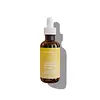What's inside
What's inside
 Key Ingredients
Key Ingredients

 Benefits
Benefits

 Concerns
Concerns

No concerns
 Ingredients Side-by-side
Ingredients Side-by-side

Aloe Barbadensis Leaf Juice
Skin ConditioningGlycerin
HumectantRosa Damascena Flower Water
MaskingTriethanolamine
BufferingSorbitol
HumectantLecithin
EmollientTocopheryl Acetate
AntioxidantGlyceryl Linoleate
EmollientGlyceryl Linolenate
EmollientRetinyl Palmitate
Skin ConditioningSodium Ascorbyl Phosphate
AntioxidantXanthan Gum
EmulsifyingSodium Hyaluronate
HumectantPullulan
Terminalia Ferdinandiana Fruit Extract
AntioxidantCentipeda Cunninghamii Extract
Skin ConditioningCalanthe Discolor Extract
Skin ConditioningCalcium Gluconate
HumectantAscorbic Acid
AntioxidantTetrasodium EDTA
Ferulic Acid
AntimicrobialVaccinium Myrtillus Fruit/Leaf Extract
AstringentHelianthus Annuus Seed Extract
Skin ConditioningLeptospermum Scoparium Branch/Leaf Oil
TonicGluconolactone
Skin ConditioningSodium Benzoate
MaskingPhenoxyethanol
PreservativeAloe Barbadensis Leaf Juice, Glycerin, Rosa Damascena Flower Water, Triethanolamine, Sorbitol, Lecithin, Tocopheryl Acetate, Glyceryl Linoleate, Glyceryl Linolenate, Retinyl Palmitate, Sodium Ascorbyl Phosphate, Xanthan Gum, Sodium Hyaluronate, Pullulan, Terminalia Ferdinandiana Fruit Extract, Centipeda Cunninghamii Extract, Calanthe Discolor Extract, Calcium Gluconate, Ascorbic Acid, Tetrasodium EDTA, Ferulic Acid, Vaccinium Myrtillus Fruit/Leaf Extract, Helianthus Annuus Seed Extract, Leptospermum Scoparium Branch/Leaf Oil, Gluconolactone, Sodium Benzoate, Phenoxyethanol
Aloe Barbadensis Leaf Juice
Skin ConditioningWater
Skin ConditioningGlycerin
HumectantSodium PCA
HumectantXanthan Gum
EmulsifyingAllantoin
Skin ConditioningPropanediol
SolventCaprylyl Glycol
EmollientCaprylhydroxamic Acid
Butylene Glycol
HumectantSodium Hyaluronate
Humectant1,2-Hexanediol
Skin ConditioningBeta-Glucan
Skin ConditioningCucumis Sativus Fruit Extract
EmollientSalix Alba Bark Extract
AstringentTamarindus Indica Fruit Extract
Skin ConditioningPhenoxyethanol
PreservativeAcetyl Hexapeptide-51 Amide
Skin ConditioningSodium Benzoate
MaskingAloe Barbadensis Leaf Juice, Water, Glycerin, Sodium PCA, Xanthan Gum, Allantoin, Propanediol, Caprylyl Glycol, Caprylhydroxamic Acid, Butylene Glycol, Sodium Hyaluronate, 1,2-Hexanediol, Beta-Glucan, Cucumis Sativus Fruit Extract, Salix Alba Bark Extract, Tamarindus Indica Fruit Extract, Phenoxyethanol, Acetyl Hexapeptide-51 Amide, Sodium Benzoate
Ingredients Explained
These ingredients are found in both products.
Ingredients higher up in an ingredient list are typically present in a larger amount.
Aloe Barbadensis Leaf Juice comes from leaves of the aloe plant. Aloe Barbadensis Leaf Juice is best known for helping to soothe sunburns. It is also anti-inflammatory, moisturizing, antiseptic, and can help heal wounds.
Aloe is packed with good stuff including Vitamins A, C, and E. These vitamins are antioxidants, which help fight free-radicals and the damage they may cause. Free-radicals are molecules that may damage your skin cells, such as pollution.
Aloe Barbadensis Leaf Juice also contains sugars. These sugars come in the form of monosaccharides and polysaccharides, folic acid, and choline. These sugars are able to help bind moisture to skin.
It also contains minerals such as calcium, 12 anthraquinones, fatty acids, amino acids, and Vitamin B12.
Learn more about Aloe Barbadensis Leaf JuiceGlycerin is already naturally found in your skin. It helps moisturize and protect your skin.
A study from 2016 found glycerin to be more effective as a humectant than AHAs and hyaluronic acid.
As a humectant, it helps the skin stay hydrated by pulling moisture to your skin. The low molecular weight of glycerin allows it to pull moisture into the deeper layers of your skin.
Hydrated skin improves your skin barrier; Your skin barrier helps protect against irritants and bacteria.
Glycerin has also been found to have antimicrobial and antiviral properties. Due to these properties, glycerin is often used in wound and burn treatments.
In cosmetics, glycerin is usually derived from plants such as soybean or palm. However, it can also be sourced from animals, such as tallow or animal fat.
This ingredient is organic, colorless, odorless, and non-toxic.
Glycerin is the name for this ingredient in American English. British English uses Glycerol/Glycerine.
Learn more about GlycerinPhenoxyethanol is a preservative that has germicide, antimicrobial, and aromatic properties. Studies show that phenoxyethanol can prevent microbial growth. By itself, it has a scent that is similar to that of a rose.
It's often used in formulations along with Caprylyl Glycol to preserve the shelf life of products.
Sodium Benzoate is a preservative. It's used in both cosmetic and food products to inhibit the growth of mold and bacteria. It is typically produced synthetically.
Both the US FDA and EU Health Committee have approved the use of sodium benzoate. In the US, levels of 0.1% (of the total product) are allowed.
Sodium benzoate works as a preservative by inhibiting the growth of bacteria inside of cells. It prevents the cell from fermenting a type of sugar using an enzyme called phosphofructokinase.
It is the salt of benzoic acid. Foods containing sodium benzoate include soda, salad dressings, condiments, fruit juices, wines, and snack foods.
Studies for using ascorbic acid and sodium benzoate in cosmetics are lacking, especially in skincare routines with multiple steps.
We always recommend speaking with a professional, such as a dermatologist, if you have any concerns.
Learn more about Sodium BenzoateSodium Hyaluronate is hyaluronic acid's salt form. It is commonly derived from the sodium salt of hyaluronic acid.
Like hyaluronic acid, it is great at holding water and acts as a humectant. This makes it a great skin hydrating ingredient.
Sodium Hyaluronate is naturally occurring in our bodies and is mostly found in eye fluid and joints.
These are some other common types of Hyaluronic Acid:
Learn more about Sodium HyaluronateXanthan gum is used as a stabilizer and thickener within cosmetic products. It helps give products a sticky, thick feeling - preventing them from being too runny.
On the technical side of things, xanthan gum is a polysaccharide - a combination consisting of multiple sugar molecules bonded together.
Xanthan gum is a pretty common and great ingredient. It is a natural, non-toxic, non-irritating ingredient that is also commonly used in food products.
Learn more about Xanthan Gum